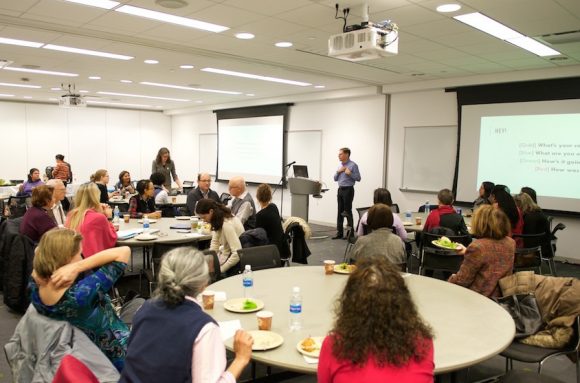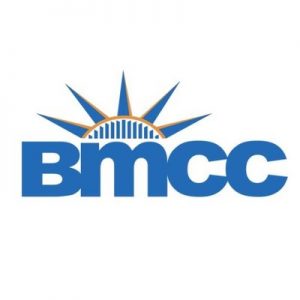BMCC will start a new tradition in January 2017. For the first time, all faculty will gather for a convocation on Friday, January 27.
In the most general sense, a convocation is simply a gathering of people. Its roots are in the church, but academics have used them to recognize the scholarly aspects college life. Frequently convocations are held to celebrate the start of a new academic year for students and faculty alike.

Teaching fellows at BMCC gather to reflect on their teaching. (BMCC Public Affairs)
In Academic Affairs, we often feel (and are told) that BMCC lacks opportunities for faculty to meet informally for conversations about teaching and learning. Additionally, it can seem that faculty and administrators don’t speak the same language when it comes to student learning.
Smaller groups of faculty meet frequently, such as the BMCC Teaching Academy (left). However, the size of our faculty and the limitations on space have meant that all-faculty gatherings are nearly impossible here. There’s only one space on campus that could accommodate all fulltime faculty—Theater One. With a capacity of 900, it will fit all the fulltime faculty and a good proportion of the part-time faculty. We hope to fill it with people and conversation.
The first annual Winter Faculty Convocation will provide an opportunity for all BMCC faculty to gather in one place to explore pedagogy and student success. Convocation provides an organized professional development opportunity on a day when faculty are not teaching or attending meetings.
The day will begin at 10 a.m. with an address by Senior Vice President and Provost, Karrin Wilks. We’ll also hear from a select group of faculty: the 2016 BMCC Distinguished Teaching Award Winners will speak about their experiences in BMCC classrooms. They are John Beaumont, Academic Literacy and Linguistics; Chamutal Noimann, English; and Nicolas Marino, English.
After lunch, workshops and discussions on high impact teaching practices will be led by BMCC faculty. Topics such as research in the classroom, experiential learning, flipping the classroom, and online learning will be facilitated by faculty who are using these practices every term at the college.
We hope that all BMCC faculty will join us for this conversation. To sign up and see more information, go to the CETLS web site.


 This is a new blog relating to teaching, learning, and scholarship at the Borough of Manhattan Community College (BMCC). As Associate Dean of Faculty, I work with faculty across the college to support teaching, improve learning outcomes for students, and contribute to research, scholarship and creative activity.
This is a new blog relating to teaching, learning, and scholarship at the Borough of Manhattan Community College (BMCC). As Associate Dean of Faculty, I work with faculty across the college to support teaching, improve learning outcomes for students, and contribute to research, scholarship and creative activity.
